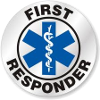The purpose of this project is to design and prototype a requirements-gathering methodology driven by the first responders community.
The methodology will include examining the current state of collecting and synthesizing responder requirements, assessing the effectiveness of that process, evaluating existing candidate platforms for use within this community, and producing a roadmap that can be used by NIST and others to achieve a solution enabling the responder community to more effectively dialogue with key stakeholders. A prototype implementation of the methodology will be developed using the roadmap and will be available for testing and evaluation and requirements gathering.
The RPI team will examine available documentation of the “current state” of first responder requirements collection, including anecdotal evidence of its advantages and disadvantages from the community's perspective. We propose an agile, iterative approach to implementing our methodology centered on the adoption of an extensible, open source content management platform with proven social network capabilities. A key deliverable will be a functioning, scalable prototype that a network of beta testers selected from the stakeholder community will evaluate in order to validate and help evolve the methodology. Our focus is on optimizing the methodology rather than the detailed technical development of the platform, thus we will customize the prototype using available open source extensions as much as possible.
We have adopted a broad definition of the term “responder” encompassing various disciplines ranging from police, fire, emergency medical services (EMS), homeland security, warfighter, etc. Our methodology will accept contributions from as wide a variety of stakeholders as possible; their role will be clearly identified in their individual profiles and will be clearly indicated in their comments and contributions, so fellow members of the community (who are granted access to information) can instantly identify both their service type and position. The effort will restrict access to responses according to the wishes of NIST as well as the wishes of the responders. Part of the methodology design will include a metadata scheme for identifying contributor characteristics and access characteristics to support appropriate access control.
We propose to evaluate venues, discussion forums and other vehicles currently available to the responder community for the purpose of developing standards and requirements. Since we cannot claim to be domain experts, we will recruit stakeholders to provide exemplars of current practice. The path this evaluation takes will depend heavily on the responses from the community; while we anticipate stakeholders will express concerns ranging from accessibility to transparency to usability, our hope is to uncover key observations that will lead to transformational change in the requirements gathering process.
We propose to conduct a “market survey” of currently available open source social networking, social media, and collaboration and content management platforms. We will vet their strengths and weaknesses for use as a platform for gathering requirements from the responder community. Platforms will be evaluated based on their suitability for our task of layering a goal-oriented “collaboration network” over an existing social network.
We will identify the key aspects of the “life cycle” process that defines an effective responder standards dialogue, including identifying a community of responders, and developing best practices for building such communities, especially by leveraging existing social media, vetting participants, tracking and scoring requirements from submission to resolution, facilitating an on-going dialogue with and between responders, and producing actionable information that facilitates the research and standards processes.
In summary, we propose to develop a methodology that will --- with regards to the responder community --- identify where we are today, determine where we would like to be in the future, examine the existing tools and platforms that can be effectively leveraged for this purpose, and layout a roadmap that can be used by NIST to lead to the identification, development and deployment of a successful platform.
View publications

